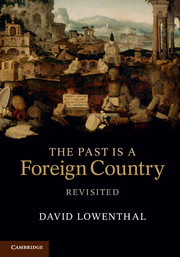9 - Relics
from Part III - Knowing the past
Published online by Cambridge University Press: 05 November 2015
Summary
The rolling rock leaves its scratches on the mountain; the river, its channel in the soil; the animal, its bones in the stratum; the fern and leaf their modest epitaph in the coal. The falling drop makes its sculpture in the sand or the stone. Not a foot steps into the snow, or along the ground, but prints … a map of its march … The ground is all memoranda and signatures.
Ralph Waldo Emerson, 1850Most of the marks that man has left on the face of the earth during his 2-million-year career as a litterbugging, meddlesome and occasionally artistic animal have one aspect in common: they are things, they are not deeds, ideas or words.
Glynn Isaac, 1971When I was a lad, all this was open fields.
Young Cockney, in London’s Charing Cross Underground tunnel, 1982Myriad traces of natural features and human artefacts long persist as tangible relics. Awareness of such relics conjoins what we know of the past through memory and history. For R. G. Collingwood, experiencing the tangible past was the essential entrée to history.
There is no better way of thinking oneself back into the Roman point of view than to look up on a map a well attested piece of Roman road and follow it for a few miles across country … Get a Roman road, or, for that matter, any road, under your feet, and you enter the spirit of the men who made it; you see the country through their eyes; you get into your bones a feeling of what they meant to do with the country, and how they meant to do it.
But no physical object or trace is a self-sufficient guide to bygone times; they light up the past only when thought to belong to it. ‘We cannot know how the flowers in the garden of Epicurus smelled, or how the mountain winds felt in Nietzsche’s hair. But we can recreate their thought [about] their original experience.’
- Type
- Chapter
- Information
- The Past Is a Foreign Country – Revisited , pp. 383 - 410Publisher: Cambridge University PressPrint publication year: 2015

